Budapest, Hungary’s capital city, is one of the most popular short break destinations in Europe, thanks to its trendy bars and restaurants. It comes as little surprise that the rest of the country is now seeing an increase of wanderlust filled travellers. Its cities are a cheap destination for visitors with affordable accommodation, tasty local food and affordable cocktails.
The food in Hungary is hearty and perfect for warming you through cold winter evenings. The most famous dish is goulash, a stew of meat and vegetables often served with dumplings. Hungary has 1500 spas catering to the nation’s love of thermal springs. Many of the spas are in stunning Roman or Greek architecture, and some are attached to luxury resorts. If natural thermal bathing is more your style, head to Lake Héviz to soak in its warm waters, or go to the Cave Bath for a thermal bath inside a cave.
Hungary is one of Europe’s oldest cities and has been ruled by the Celts, Romans and Attila the Hun, a Hungarian native, who led his kingdom from his home country. Its rich history has left many famous historical landmarks in Hungary to explore its ancient cities, towns and natural landscapes.
There are incredible national parks, caves and beaches by lakes to investigate despite the country being landlocked. Lake Balaton is Central Europe’s largest lake and is often nicknamed the Hungarian Sea due to its beaches and tides. Hungary is fast becoming a cool, must-visit European destination, so tick these 20 famous Hungary landmarks off your bucket list.
Hungary Landmarks
Natural Landmarks in Hungary
1- Egerszalók Sódomb
Egerszalók Sódomb is a thermal spring (temperatures are between 65-68°C) in the village of Egerszalók.
The water flows up from an underground hot spring 410m (1345ft) below the surface.
As the water spills over the edge of the pool, a unique limestone deposit runs for 1200 square meters (12916 square feet).
The water has a high content of metasilicic acid, which is suitable for treatments for skin conditions and autonomic nervous system disorders. The healing waters have been aiding locals for more than 18000 years.
Egerszalók Sódomb is at Egerszalók, 3394.
2- River Danube Bend
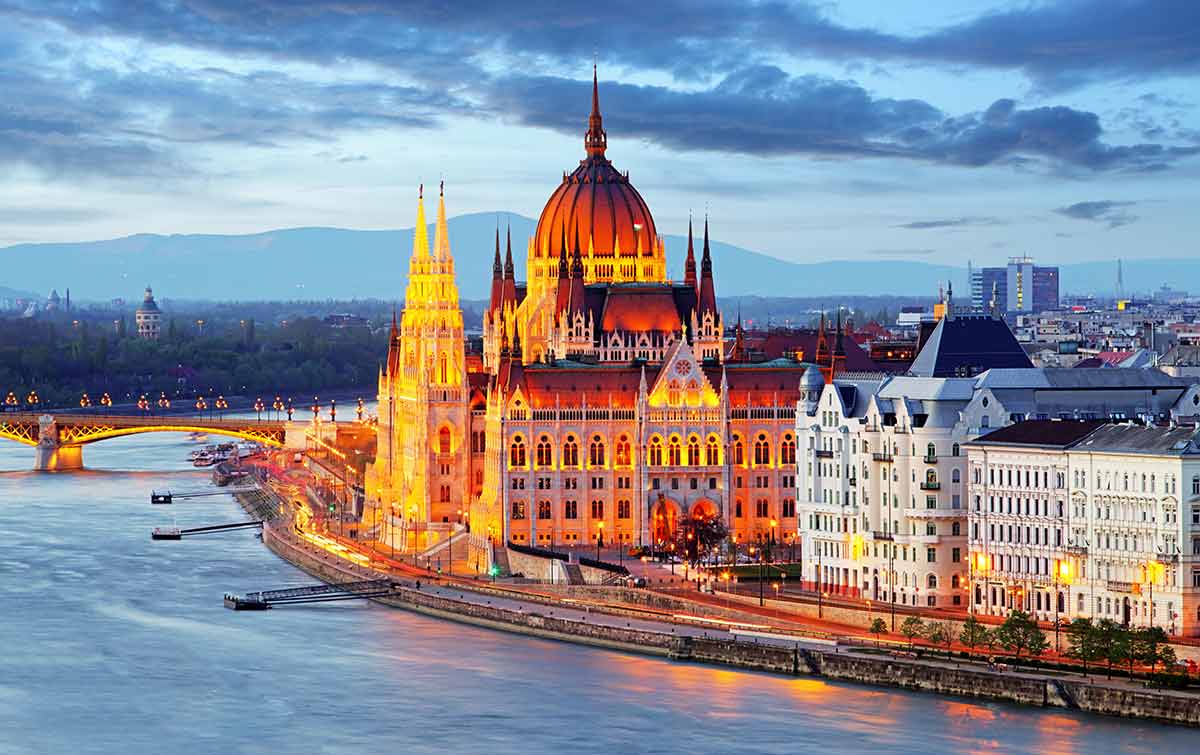
The River Danube is the second-longest river in Europe and flows through Austria, Germany, Romania, Hungary, Serbia, Bulgaria, Ukraine, Slovakia and Croatia.
Budapest is one of the Danube’s most famous cities on the banks of the river.
The Danube Bend is one of the most beautiful stretches of the River Danube.
This dramatic horseshoe-shaped bend is dotted with small villages, ruins of castles and small farms.
The area surrounding the bend is well worth a day trip away from the bigger cities, however for a more relaxing activity to take in all the sights, hop on a river cruise.
River Danube Bend is at Visegrád.
3- Lake Balaton
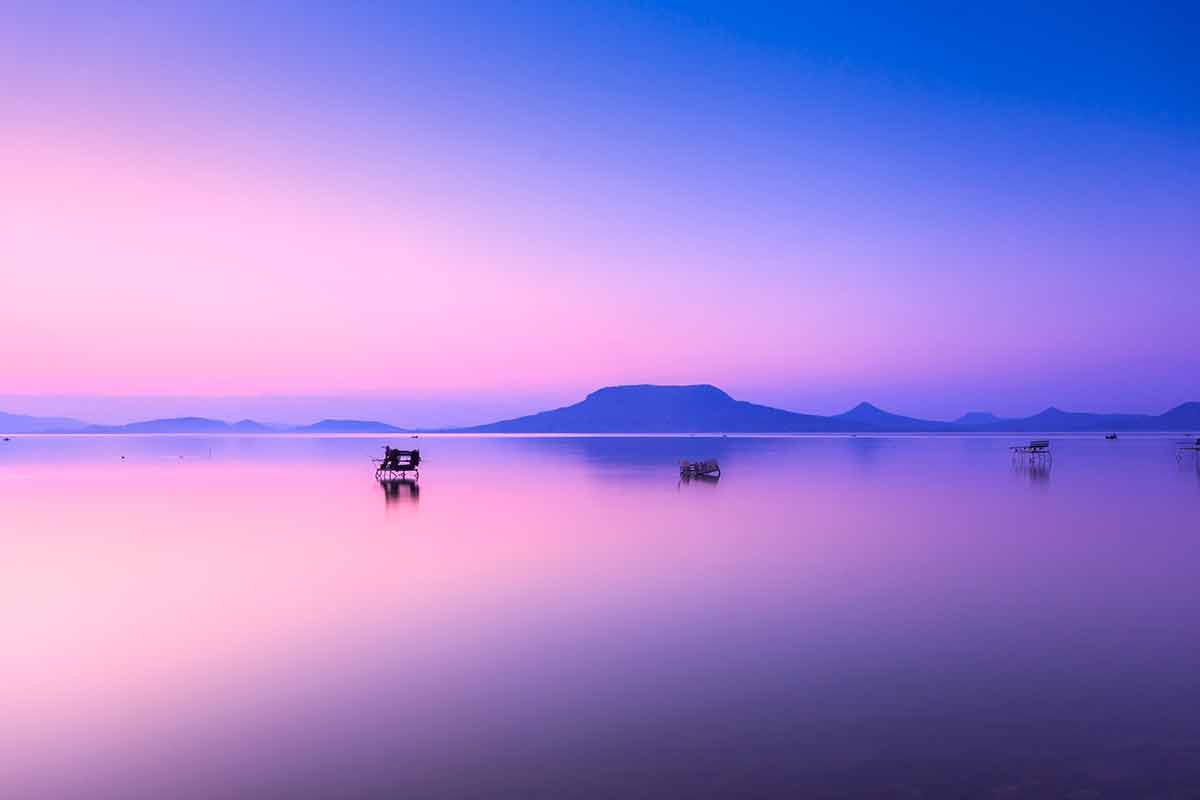
Lake Balaton is Central Europe’s largest freshwater lake, covering 600 square kilometres (231miles) and is 78km (48 miles) long.
The lake was originally five separate bodies of water, however, the land barriers gradually eroded to leave the lake in its current shape.
It is still possible to see some unusual patches of land jutting out into the water to show where the separate lakes used to be.
The lake’s water is a vibrant colour of emerald green, making it a photographers favourite.
The lake is a popular tourist destination in summer for its beaches and vineyards in the mountains nearby.
Lake Balaton is at PC57+GF Balatonmáriafürdő.
4- Hortobágy
Hortobágy is a national park in eastern Hungary covering 800 square kilometres (309 square miles).
The park is rich with folklore and local history, as well as spectacular natural landscapes.
Hortobágy is an ancient landscape formed over thousands of years through an Ice Age and animal grazing along the Tisza River.
The Nine-holed Bridge was once the longest road stone bridge in Hungary and is now a national landmark.
Hortobágy is at Hortobágy, Unnamed Road, 4071.
5- Bükk Mountains
The Bükk Mountains consists of more than 20 peaks.
The highest peak within the mountain range is Kettős Bérc, whose summit is 961m (3153 ft) above sea level, making it the third highest peak in Hungary.
Within the mountain range are more than 1155 caves, including the deepest caves in Hungary, the Bányász-barlang at 274m (899 ft) and István-lápa at 254m (833 ft) in depth.
Many tourists head to the range in spring for hiking, however, it is also a popular skiing resort during winter.
The Bükk Mountains is at Miskolc, 3517.
6- Szalajka Valley
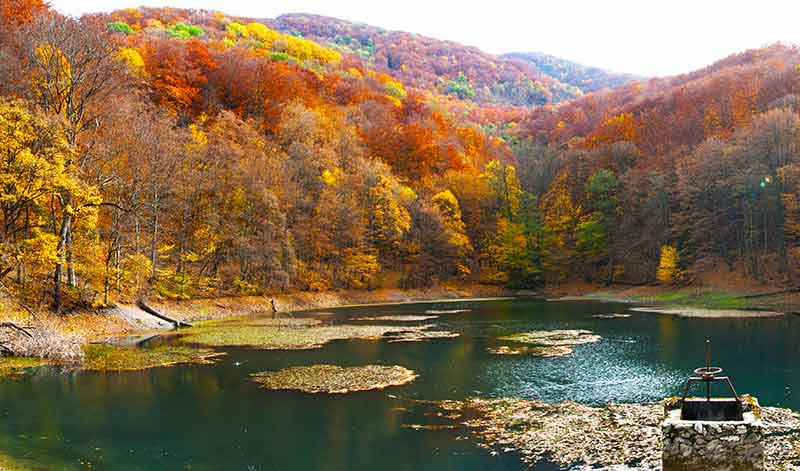
The best way to see the Szalajka Valley is by narrow-gauge train, which runs hourly through the gorgeous valley.
Szaljka Spring is a lovely spot for a picnic.
Within the valley’s waters are many trout, which are caught and prepared by local restaurants.
Trek away from the railway to explore the valley’s beauty on foot and enjoy the diverse native flora and fauna.
Szalajka Valley is at Felsőtárkány.
7- Gaja Ravine
The Gaja Ravine winds its way through Bakony Mountain.
The ravine, located in the Transdanubian Mountains, was carved by the Gaja Creek over thousands of years.
One of the famous landmarks within the ravine is an ancient Roman Bath, which fills with warm waters from the creek.
The bath is formed of rocks positioned to create a small bathing lake.
Gaja Ravine is at Bakony Mountains.
8- Megyer-Hegyi Mountain Pool
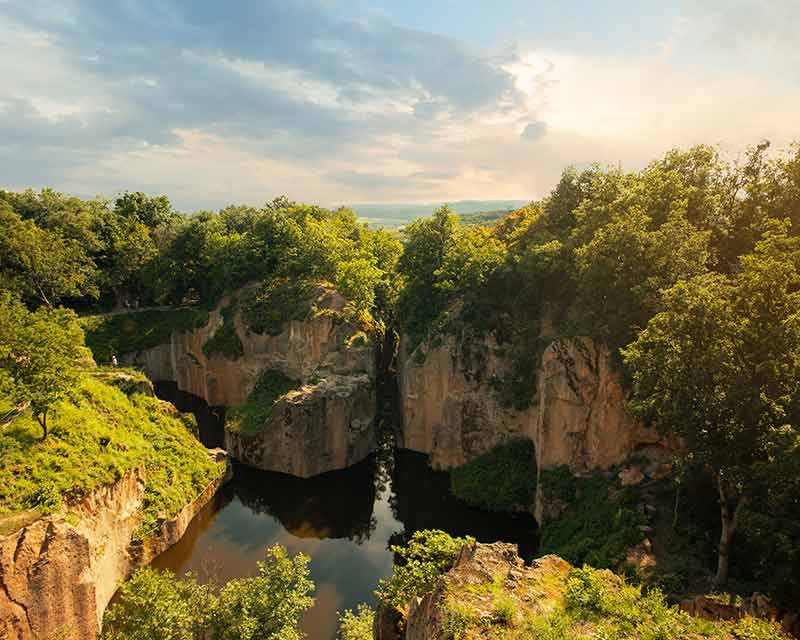
Often referred to as one of the hidden treasures of Hungary, the Meyer-Hegyi Mountain Pool is a natural Hungarian landmark not to be missed.
The pool, actually a lake due to its size, is not a natural lake.
The waters instead fill an old quarry on the mountain, which the mine used for centuries.
When works ceased in 1907, rainwater began to collect in the quarry.
The pool is now a nature reserve and is frequented by hikers trekking the Millstone Nature Trail.
Megyer-Hegyi Mountain Pool is at Sárospatak, 3950.
9- Lake Szelid
Lake Szelid is an unusually shaped salt lake formed by the Danube River.
The lake stretches to 200m (656 ft) at its widest, 4km (2.5 miles) in length and a mere 3m (9.84ft) deep.
The waters warm quickly in summer due to their shallow nature, making it a popular destination for wild swimming and boating.
Within the lake are medicinal salts, which attracts visitors seeking to bathe in its therapeutic waters.
On the shores of the lake is a stretch of sandy beach that fills up fast in the warmer months.
Lake Szelid is at Dunapataj, 6328.
10- Baradla Cave
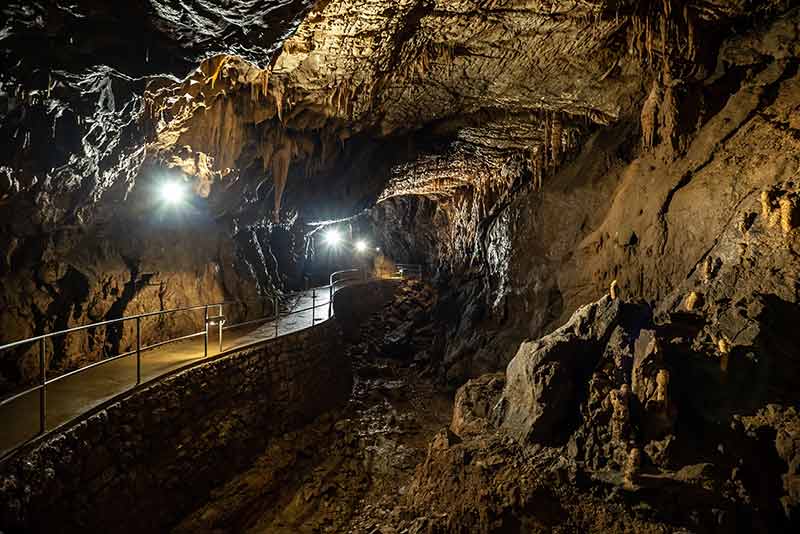
Baradla Cave is the largest cave in Hungary, stretching for 7km (4.3 miles) and offers visitors a leisurely walk through them.
The cave has three entrances, two of which are manmade to increase accessibility to the cave for visitors.
Within the cave are black stalactites that dangle from the red and green ceilings, all caused by natural mineral deposits.
The cave is a popular destination for musical performances, with the Aggtelek branch being used regularly for concerts and the Giants Hall a stopping point on tours for musical experiences.
Baradla Cave is at Aggtelek, 3759.
For more amazing European Landmarks, read:
- 30 Spain Landmarks
- 20 Switzerland Landmarks
- 22 Germany Landmarks
- 35 London Landmarks
- 30 France Landmarks
- 20 Italy Landmarks
- 20 Greece Landmarks
- 20 Russia Landmarks
- 20 Scotland Landmarks
- 20 Ireland Landmarks
- 21 Wales Landmarks
- 20 Turkey Landmarks
- 20 England Landmarks
- 20 Hungary Landmarks
- 21 Romania Landmarks
- 20 Ukraine Landmarks
- 20 Athens Landmarks
- 20 Rome Landmarks
- 20 England Landmarks
- 20 Portugal Landmarks
- 20 Poland Landmarks
- 20 Iceland Landmarks
- 20 Bulgaria Landmarks
- 21 Croatia Landmarks
- 20 Bulgaria Landmarks
- 20 Austria Landmarks
- 21 Finland Landmarks
- 20 Sweden Landmarks
- 20 Denmark Landmarks
- 20 Belgium Landmarks
- 20 Netherlands Landmarks
- 20 Barcelona Landmarks
- 21 Czech Republic Landmarks
- 20 Landmarks in Paris
- 20 Landmarks in Liverpool
- 10 Istanbul Landmarks
Historical Landmarks in Hungary
11- Hungarian Parliament
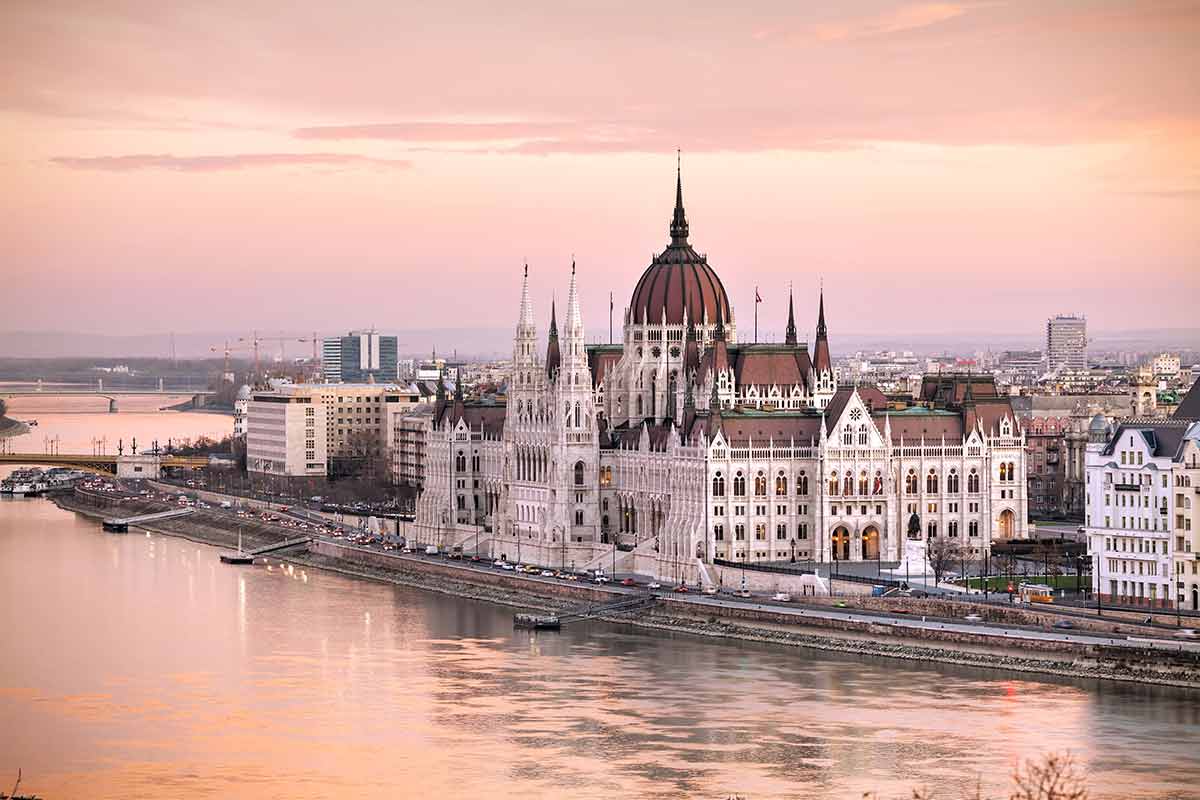
The Hungarian Parliament building is on the banks of the River Danube and has been a key part of Hungary’s history for more than 200 years.
An architectural design contest awarded the job of designing the building in the 1880s to Imre Steindl.
The architect took inspiration from the Houses of Parliament in the UK to create his new Gothic building.
A guided tour of the building is the way to see its prominent features, such as the Main Staircase, Old Upper House Hall, and getting a glimpse at the coronation jewels housed there.
The Hungarian Parliament is at Budapest, Kossuth Lajos tér 1-3, 1055.
12- Buda Castle
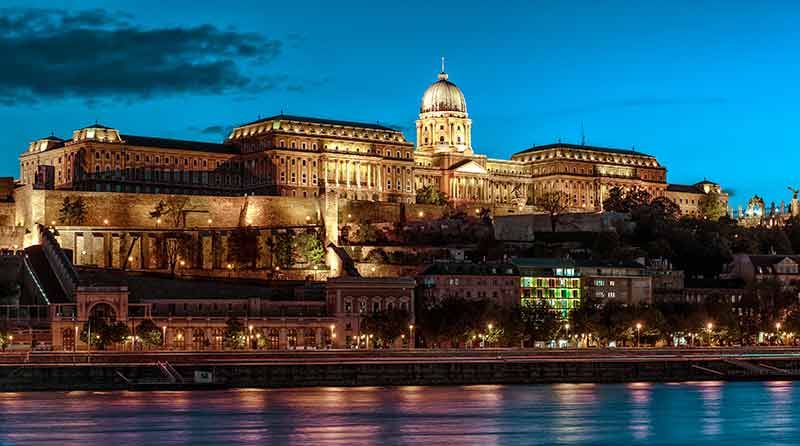
When visiting Hungary, you cannot miss Buda Castle, one of Budapest’s most important historical landmarks.
Buda Castle has long been the residence for the kinds and queen of Hungary.
The first residence for the royal family on Castle Hill, where Buda Castle currently stands today, was built during the mid-1200s.
The current castle was completed in the 1700s, but extensive bombing during WWII destroyed the palace.
The Hungarian government rebuilt it during the Kádár era in the more simple Stalin Baroque style.
Within the Baroque palace are the Hungarian National Gallery and the Budapest History Museum.
Buda Castle is at Budapest, Szent György tér 2, 1014.
13- Fisherman’s Bastion
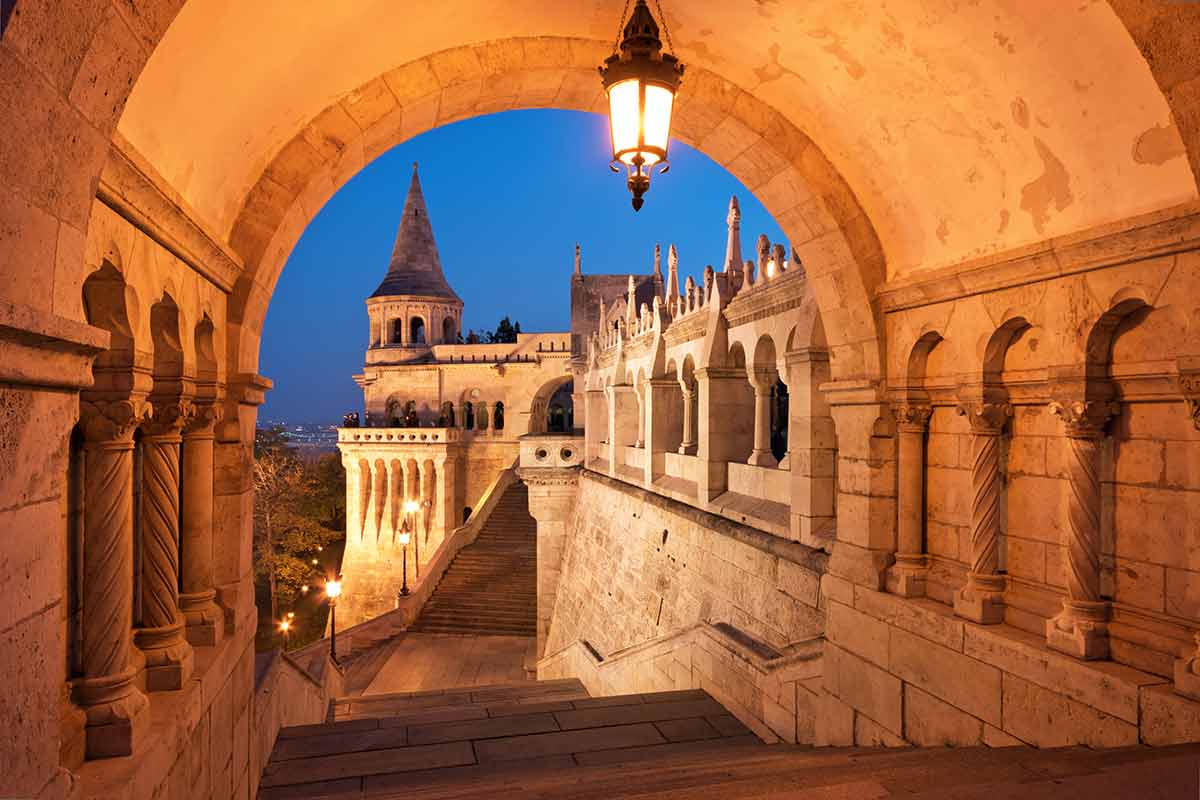
Fisherman’s Bastion is a must-visit historical landmark in Budapest and one of the most popular tourist attractions.
Built to celebrate the 100th birthday of the Hungarian state between 1895 and 1902, the Bastion is Neo-Romanesque in style and inspired by early medieval architecture.
The seven towers are significant to the history of Hungary as the towers of the Halaszbastya represent the seven chiefs who settled with their tribes in modern-day Hungary in 895.
Fisherman’s Bastion is at Budapest, Szentháromság tér, 1014.
14- Heroes’ Square
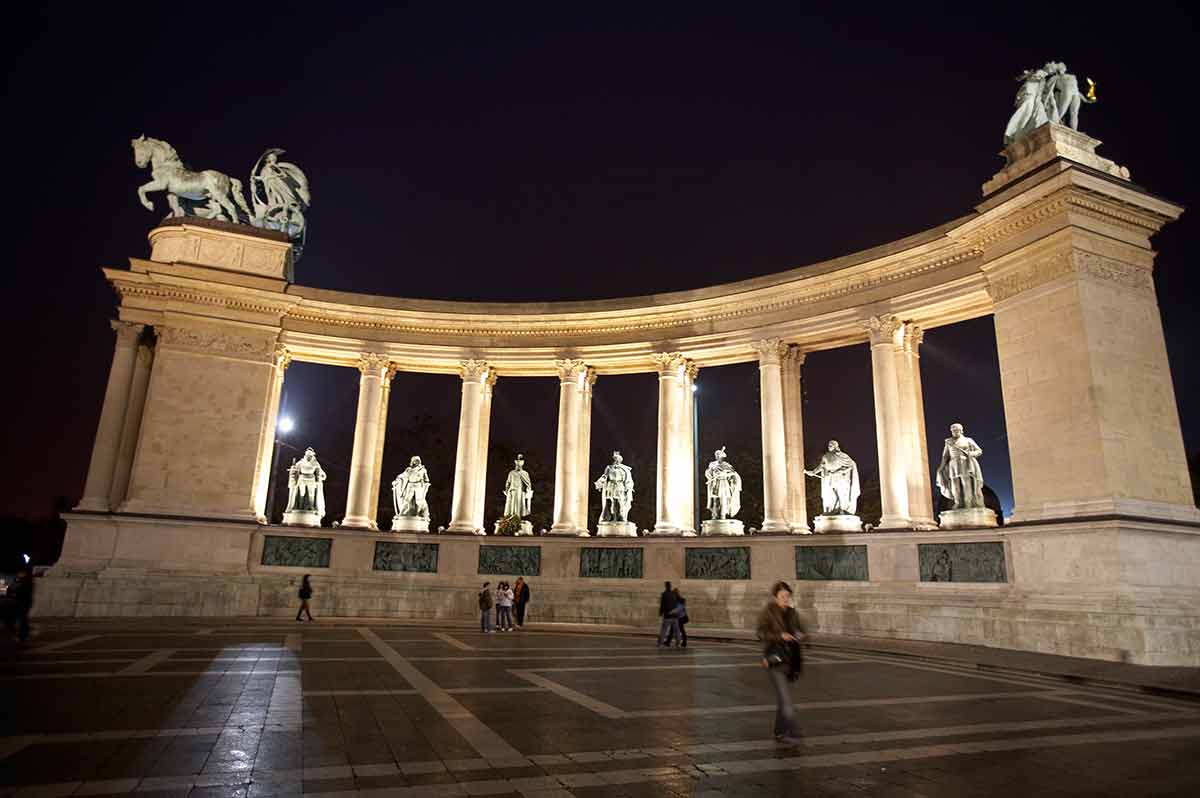
Another of Budapest’s most famous landmarks is Heroes’ Square.
The square is dominated by the Hungarian Millennium Monument, dedicated to kings, politicians and Hungarian heroes who gave their lives to make the country a better place.
The government first built these Hungarian monuments in 1896 to celebrate the Millennium of Hungary, and improvements over the years turned the square into a key landmark destination.
In the centre of the monument is a tower topped with the statue of the Archangel Gabriel holding the Hungarian Holy Crown and the Apostolic double-cross.
Heroes’ Square is at Budapest, Hősök tere, 1146.
15- Dohany Synagogue
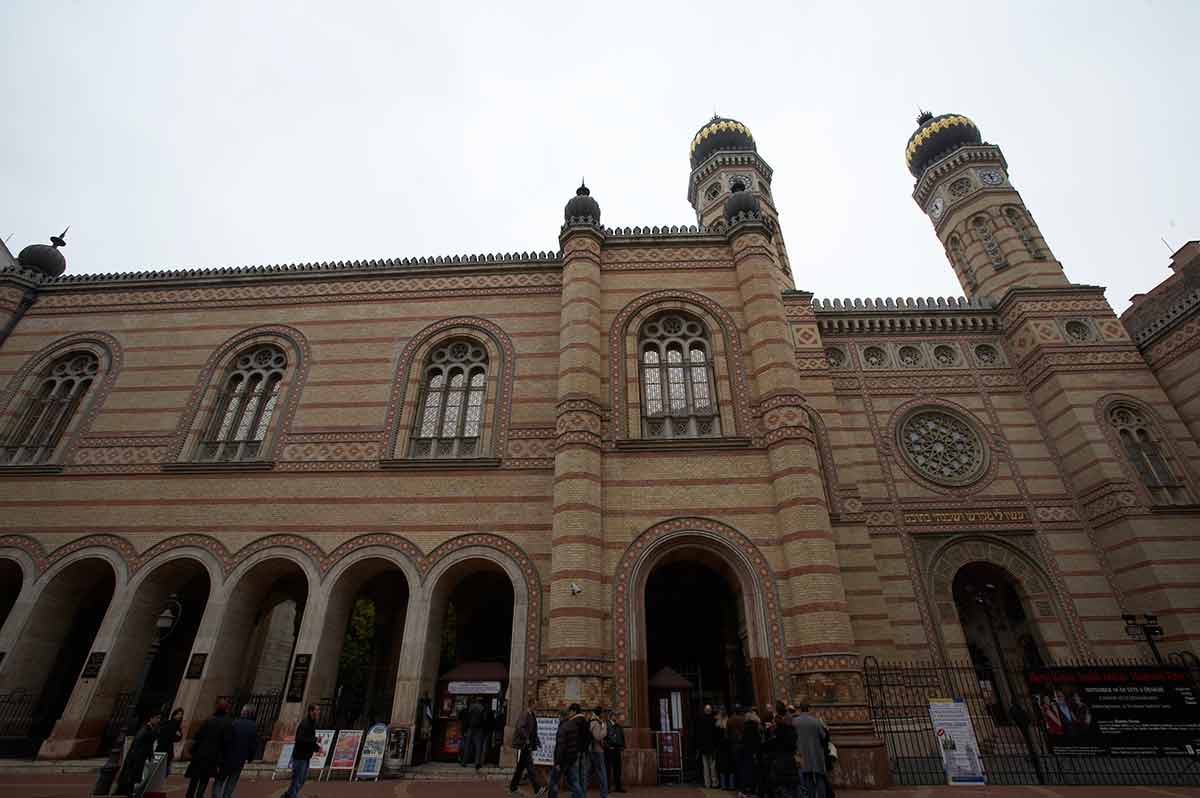
Dohany Synagogue is the second-largest synagogue globally and is large enough to seat up to 3000 people during services.
Ludwig Förster designed the plans for the synagogue, which was built between 1844 and 1859.
The synagogue is Byzantine-Moorish in style and looks like a building out of the Middle East.
Notable features of the synagogue include two domes atop towers of 43m (141ft), symbolising Solomon’s temple’s columns.
The synagogue played a vital role for Jewish people during WWII as it provided refuge for thousands during the winter of 1944 to 1945.
Sadly those who could not make it inside the synagogue died outside, and their remains are buried in the courtyard.
A Holocaust memorial is also a stark reminder of the horrors of the war. Imre Varga designed the weeping willow tree from metal, where each leaf names a Hungarian Jewish martyr.
Dohany Synagogue is at Budapest, Dohány u. 2, 1074
Also read:
- 20 USA Landmarks
- 23 Canada Landmarks
- 22 Ohio Landmarks
- 21 Arizona Landmarks
- 21 Minnesota Landmarks
- 21 Oregon Landmarks
- 21 Illinois Landmarks
- 21 Colorado Landmarks
- 21 Georgia Landmarks
- 21 Michigan Landmarks
- 23 Los Angeles Landmarks
- 21 Washington Landmarks
- 21 Maryland Landmarks
- 20 Manitoba Landmarks
- 20 Kansas Landmarks
- 21 New Mexico Landmarks
- 20 Idaho Landmarks
- 20 Montana Landmarks
- 20 Oklahoma Landmarks
- 21 Wisconsin Landmarks
- 20 Tennessee Landmarks
- 21 Iowa Landmarks
- 20 Alaska Landmarks
- 20 Miami Landmarks
- 21 West Virginia Landmarks
- 21 Kentucky Landmarks
- 20 Louisiana Landmarks
- 21 Arkansas Landmarks
- 20 Cincinnati Landmarks
- 20 San Antonio Landmarks
- 25 Indiana Landmarks
- 21 New York Landmarks
- 20 Texas Landmarks
- 21 Boston Landmarks
- 20 Florida Landmarks
- 20 Hawaii Landmarks
- 5 South Dakota Landmarks
- 21 Pennsylvania Landmarks
- 23 New Jersey Landmarks
- 21 Virginia Landmarks
- 21 North Carolina Landmarks
- 21 Utah Landmarks
- 21 Nevada Landmarks
- 20 Massachusetts Landmarks
- 20 Washington DC Landmarks
- 20 Vermont Landmarks
- 20 Nebraska Landmarks
- 20 North Dakota Landmarks
- 21 Missouri Landmarks
- 20 Rhode Island Landmarks
- 21 Maine Landmarks
- 21 Connecticut Landmarks
- 20 San Diego Landmarks
- 20 Landmarks In South Carolina
- 20 Mississippi Landmarks
- 20 Las Vegas Landmarks
- 20 Dallas Landmarks
- 20 Houston Landmarks
- 20 Seattle Landmarks
16- St Stephen’s Basilica
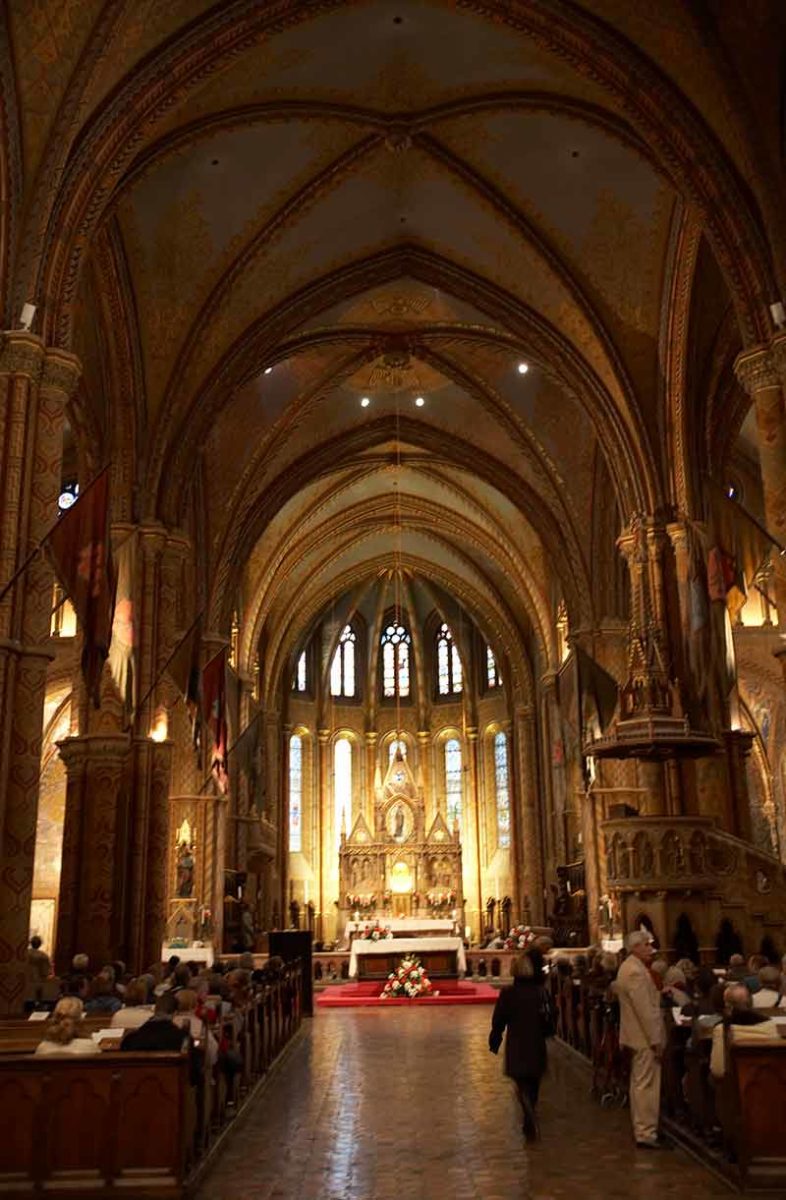
Named after Hungary’s first king, St Stephen’s Basilica is a Roman Catholic Church.
The right hand of King Stephen, who died in 1038, is housed within the church.
According to legend, Stephen’s right hand was incorruptible.
The church is Neo-classical and features two large bell towers.
The southern bell tower holds Hungary’s largest bell.
Within the basilica are many important works of art, including a pulpit made by Jozsef Kauser and stained glass by Miksa Roth.
St Stephen’s basilica is at Budapest, Szent István tér 1, 1051.
17- Szechenyi Thermal Baths
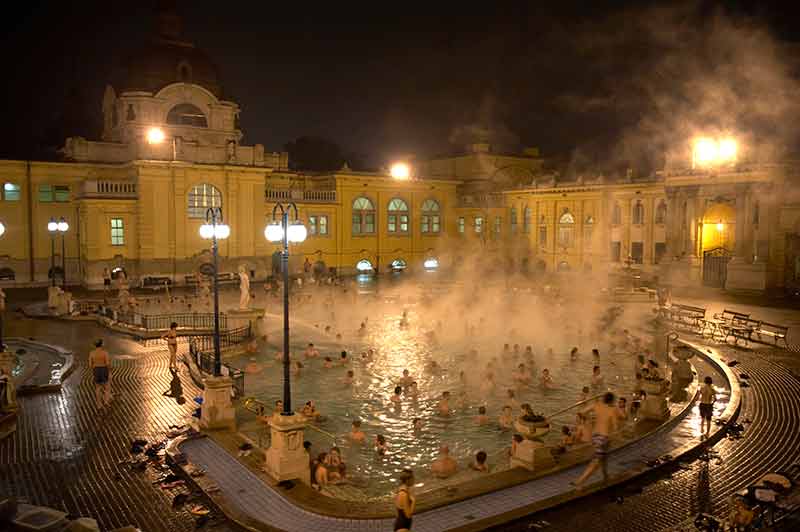
Szechenyi Thermal Baths were built in 1913 to take advantage of Hungary’s natural thermal waters.
The baths provided an affordable location for locals and tourists to bathe in its healing waters.
The main draw to the baths is the natural hot spring, where natural minerals have medicinal properties.
There are 18 pools, 10 saunas and treatment rooms within the baths, turning it into a must-visit historical location to relax in.
Gyozo Czigler designed the baths in the Neo-baroque style and added features of civilisations that have long harnessed thermal waters’ powers, such as Turkish and Roman statues.
Szechenyi Thermal Baths is at Állatkerti krt. 9-11, 1146.
18- Sopron Firewatch Tower
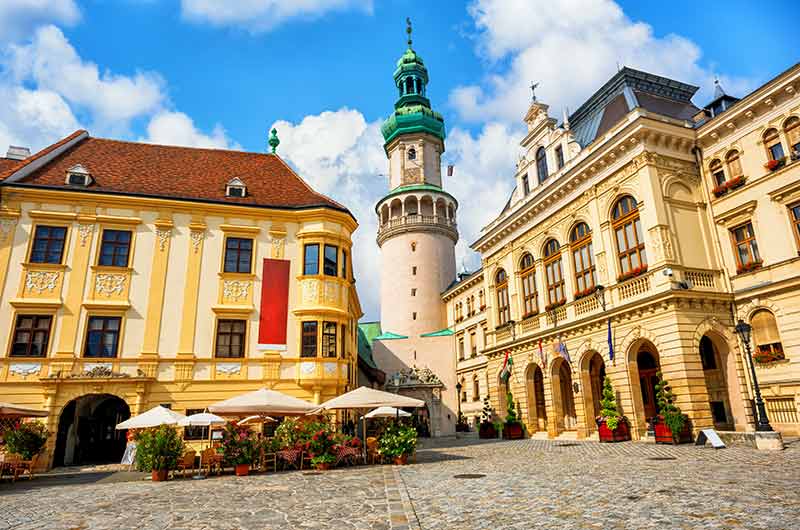
At the northern section of the main square, the Firewatch Tower is a famous historical landmark in the town of Sopron.
The tower was built upon a Roman town wall and stood in its current form since the 1670s.
Later, the tower was given an elaborate baroque balcony and helm roof.
It also features a double-headed eagle constructed to celebrate Queen Elenora’s coronation in 1622.
Following the fire, the eagle was moved to the top of the tower.
The tower stands as a symbol of allegiance.
It is adorned with a new-classical doorframe to remember the referendum that allowed the town and surrounding villages to remain a part of Hungary.
Sopron Firewatch Tower is at Sopron, Fő tér 5, 9400.
19- Aquincum
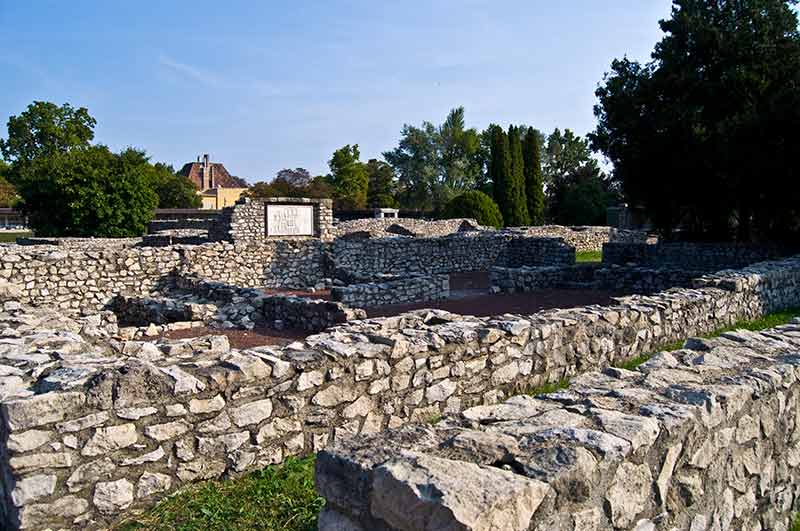
Aquincum was once a thriving Roman town, but these days, the town’s ruins are open to the public to explore.
The Danube River landmark consists of the ruins of the amphitheatre, military camps, and many buildings’ foundations.
The town was settled by the Celtic Eravisci people and was called Ak-ink due to its abundance of thermal springs.
Archeological excavations of the area began in the late 19th century.
Coins, pottery and other artefacts from the archaeological dig are on display in the Aquincum Museum.
Aquincum is at Obuda.
20- The Iseum
The Iseum is a Roman temple dating from 2AD dedicated to the Egyptian goddess Isis.
The temple has over the centuries been restored and excavated following its discovery in the 1950s.
The temple ruins consist of two partially reconstructed temples.
The wider area surrounding the Iseum has been significantly restored and is now protected by a museum complex.
The Iseum is the third-largest temple to Isis outside of the temples at Rome and Alexandria.
Whilst excavating the area, important finds such as facade reliefs, fragments of statues and bells and vessels were found.
The Iseum is at Szombathely, Rákóczi Ferenc u. 6-8, 9700.
21- Ludwig Museum
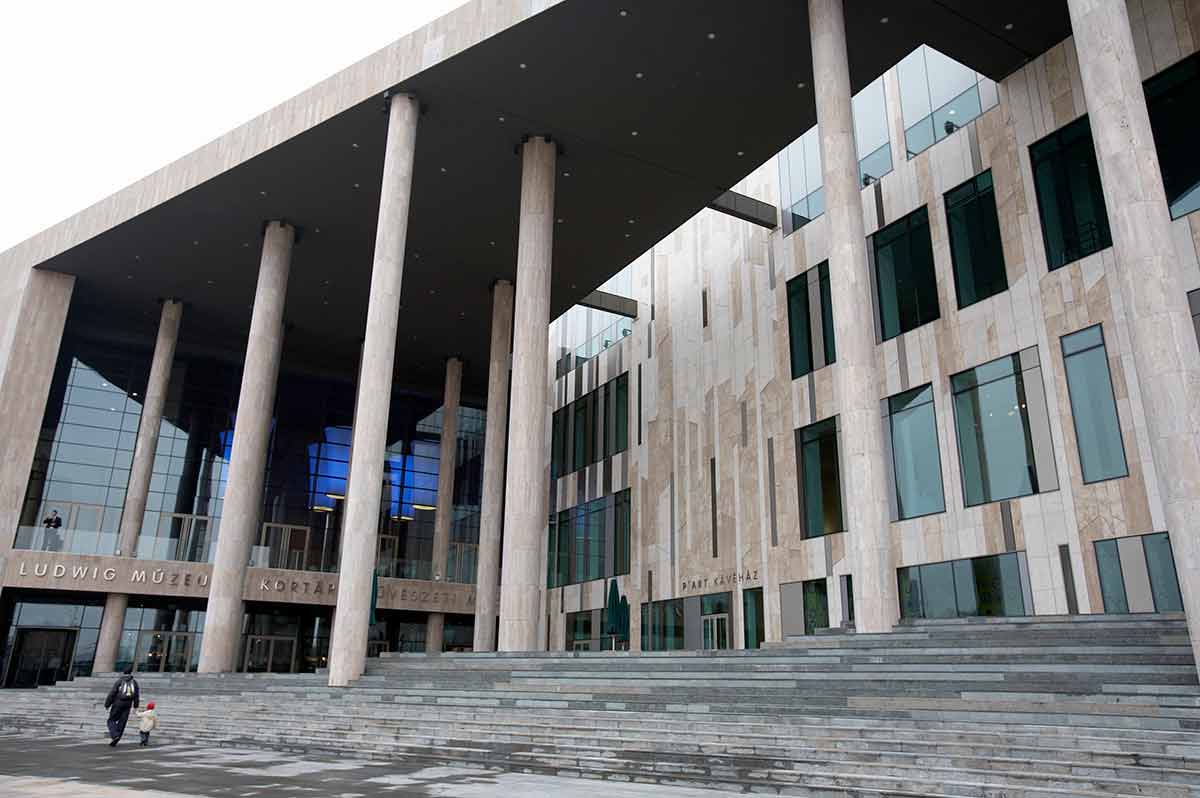
Budapest’s museum of contemporary art showcases a range of works from around the world including a collection from eastern and central Europe.
There’s also US Pop Art and a roster of travelling art exhibitions.
Ludwig Museum is at Budapest, Komor Marcell u. 1, 1095 Hungary.
22- National Theatre (Nemzeti Színház)
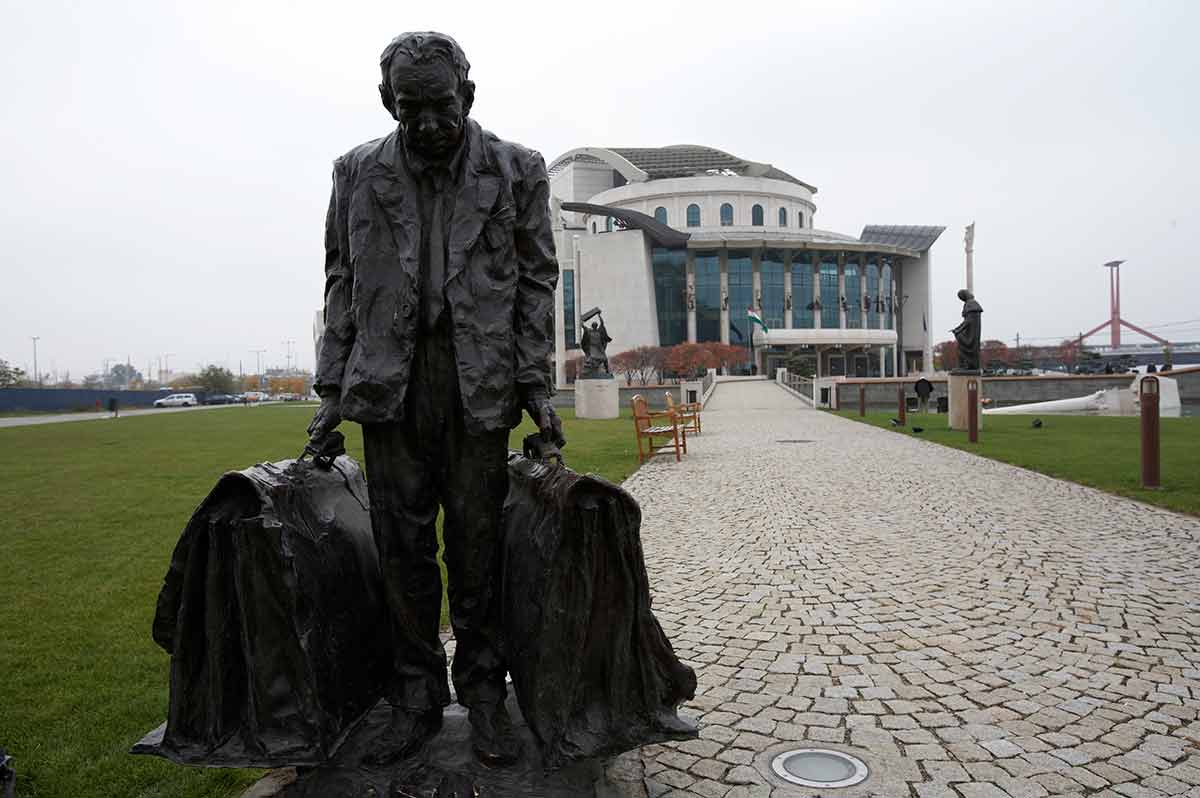
The National Theatre is at 1 Bajor Gizi park, Budapest.
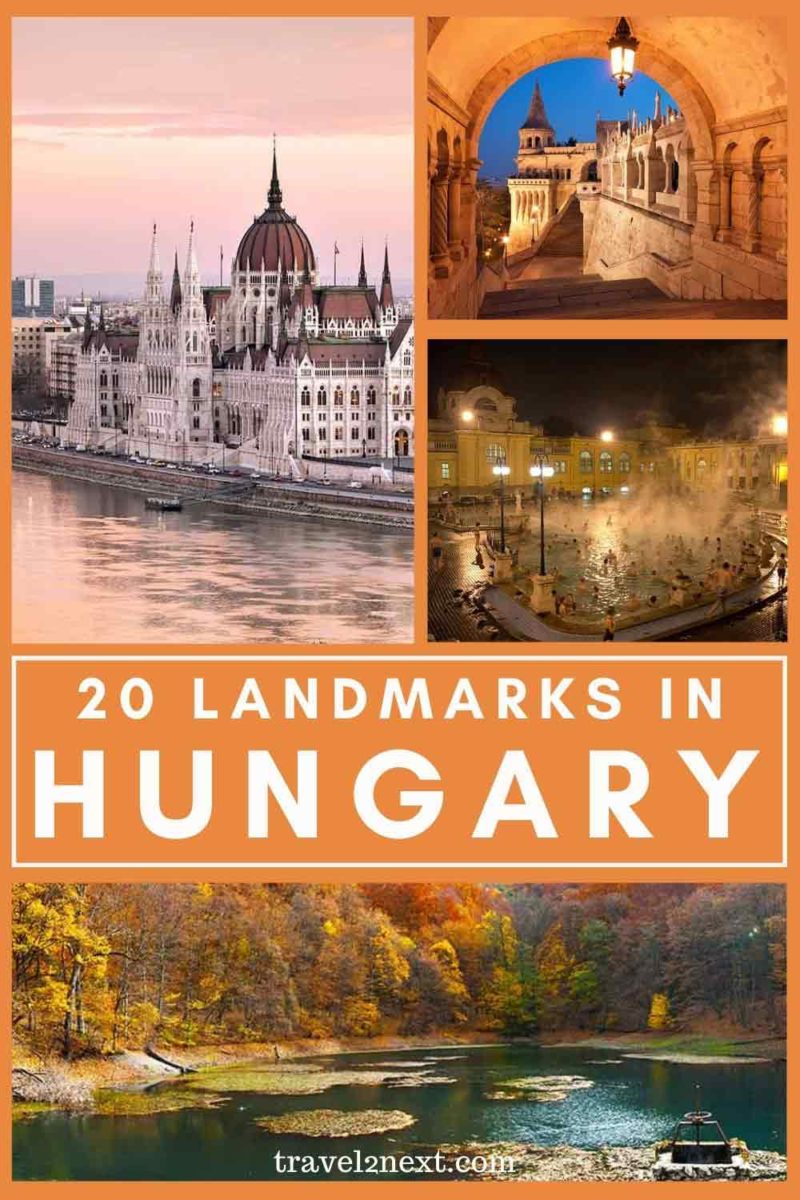
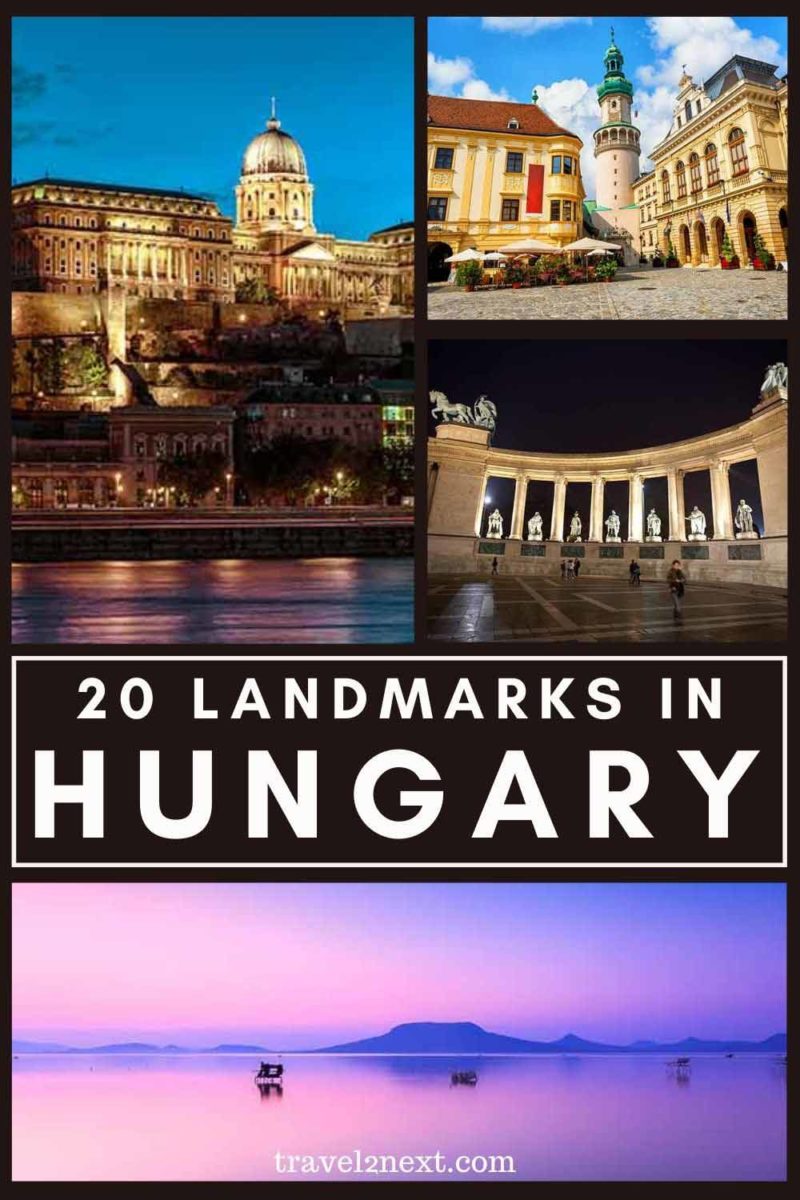
Plan Your Trip

Rent A Car – Find the best car rental rates at Discover Cars. They compare car hire companies to provide you with the best deal right now.

Find A Hotel – If you’re curious about this article and are looking for somewhere to stay, take a look at these amazing hotels.

